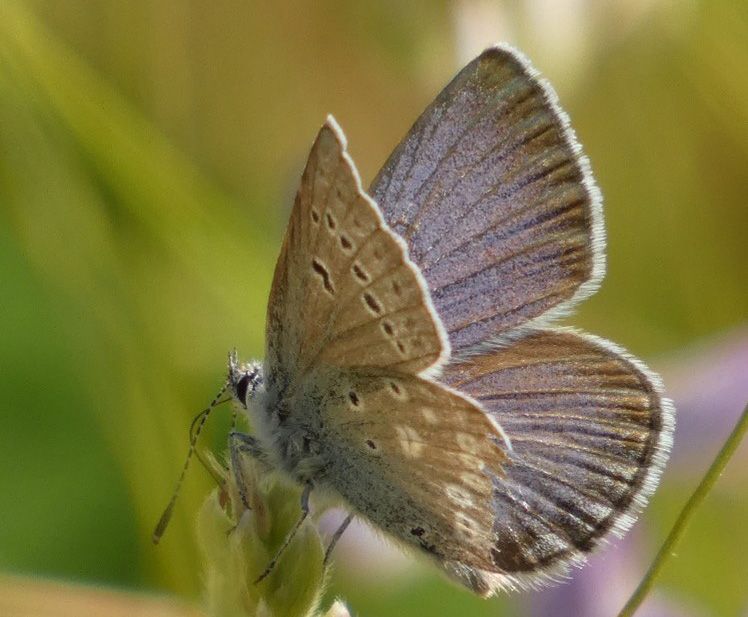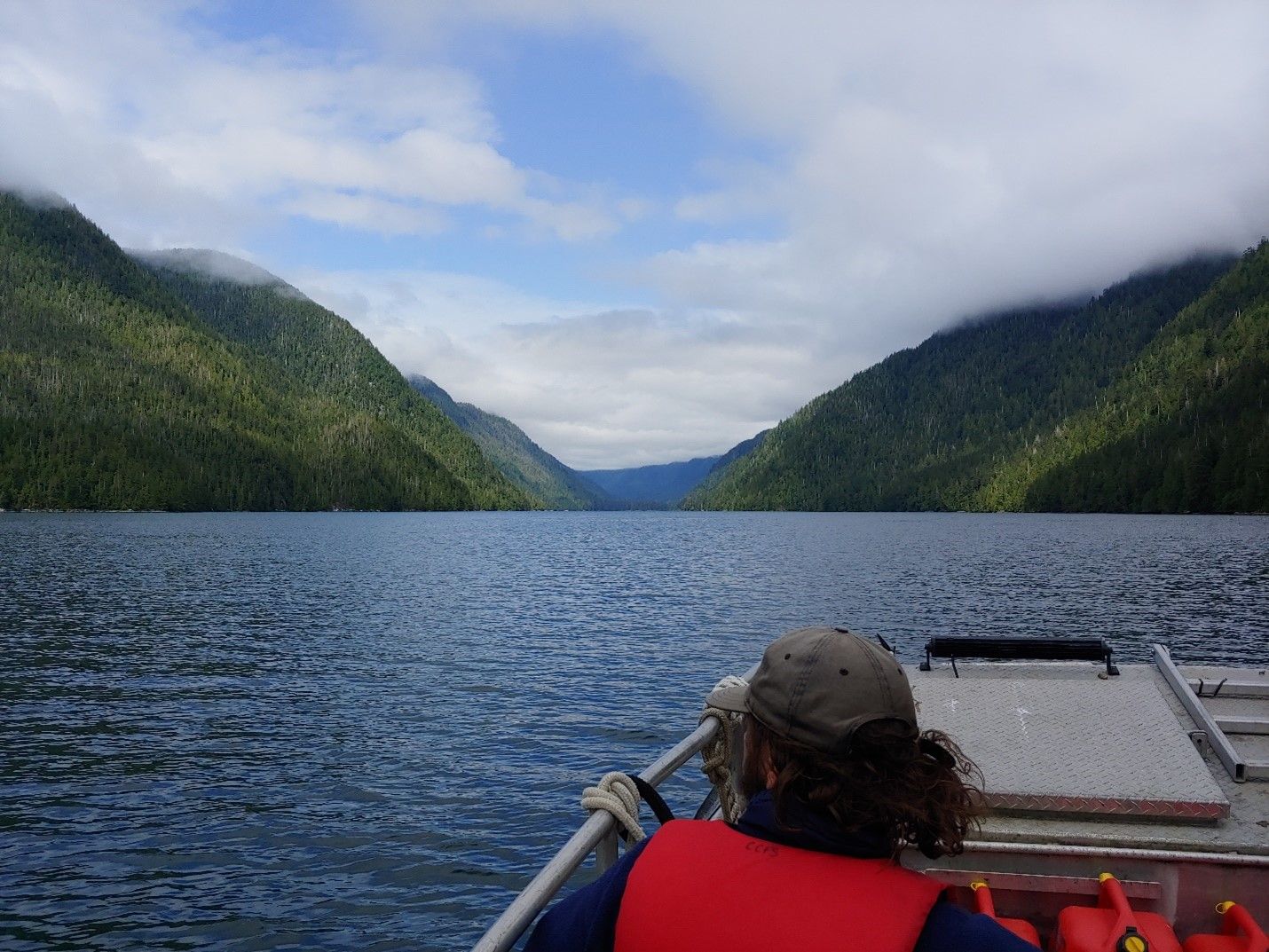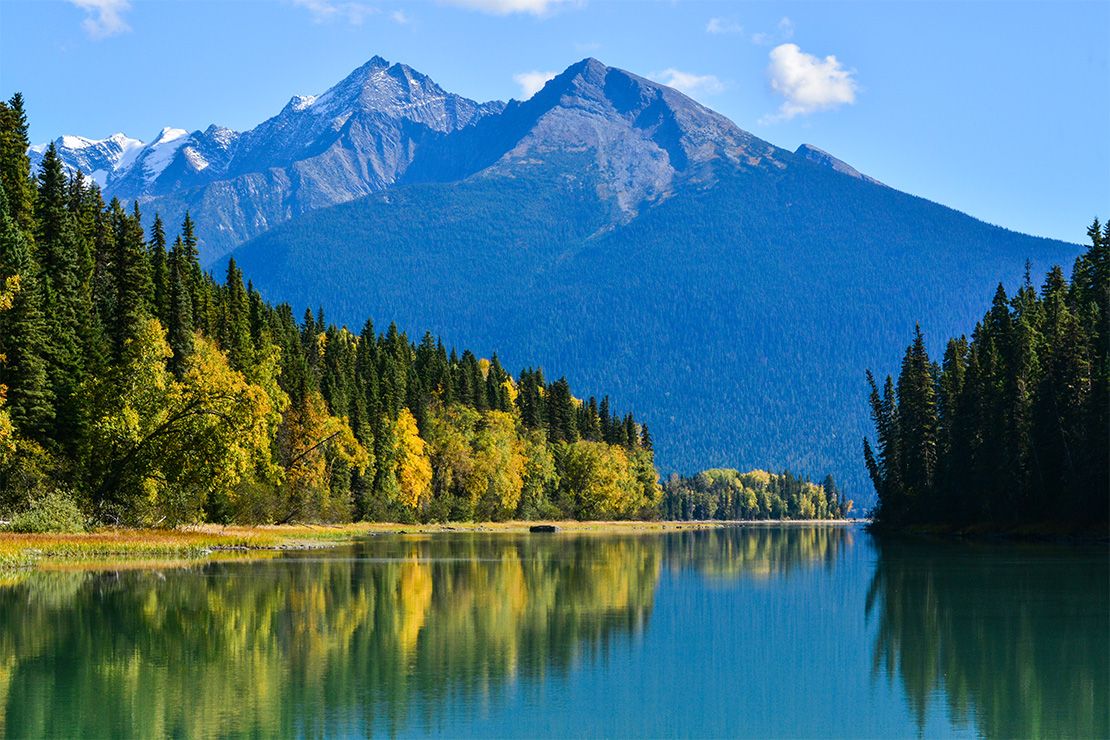Embracing butterfly habitat in BC Parks
Brenda Beckwith, Janice Arndt, and Valerie Huff (Selkirk College)

This project sought to find out the associations between butterflies and plants, and to restore butterfly habitat within two provincial parks, Beaver Creek and Syringa. Two rare species of butterfly were observed during fieldwork in 2021 and 2022, the red-listed Edith’s Copper and the blue-listed Silver-spotted Skipper.
There was rapid growth of invasive weedy plants (especially woolly vetch) observed in Syringa in 2022, which points to a need for control of invasive species at this site. Climate change has led to increases in the annual average temperature. It will likely lead to increases in total annual precipitation, but with less rain in the summer months. These environmental changes will likely cause changes in the vegetation community, which could negatively affect butterflies and butterfly habitat.
This work will continue in 2023 and beyond to continue to track plant and butterfly abundance, and to continue restoration work. Funding was provided to build a universally accessible walkway and a bench in the Butterfly Habitat Interpretive Garden in Syringa Park.
Secwépemc perspectives of climate change and resiliency in Tsútswecw Provincial Park
Carmen Massey, Emalee Vandermale, and Courtney W. Mason (Thompson Rivers University)
Tsútswecw Park is a popular destination for people wanting to see the famous Adams River sockeye run. Salmon numbers have been in decline for many years for reasons related to climate change, habitat loss, overfishing, pollution, and many other factors. The decline in salmon has implications for the culture of local Secwépemc peoples, who are caretakers of the land. The loss of salmon means significant challenges to the health, language, and education strategies of Secwépemc peoples.
Researchers interviewed Secwépemc Elders from four communities. They learned about the Elders’ history with BC Parks and their connection to the lands that became Tsútswecw Provincial Park. This presented an opportunity to strengthen the relationships necessary for effective co-management of the park and the salmon within it. It also built opportunities for the Secwépemc peoples to work with BC Parks to deliver tourism programs and enhance conservation outcomes.
Understanding above- and below-ground alpine plant responses to climate change and increasing recreational traffic in the Coastal Mountains of British Columbia using observational and experimental methods
Cassandra Elphinstone, Courtney Collins, Nathalie Chardon, Anya Boardman, Tyler Chai, Allen Zhao, Philippa Stone, Noémie Boulanger-Lapointe, Nina Hewitt, and Greg Henry (University of British Columbia)
Alpine ecosystems are particularly vulnerable to disturbance, both in the form of climate change, and recreation impacts like trampling. This project studied alpine plant communities in Garibaldi Provincial Park to look at the effects of both stressors. To study the effects of warming, one-metre square open-top chambers (similar to greenhouses) were setup in three different alpine habitats. The chambers raised the average temperature within them by 1-3 °C. Time lapse cameras recorded the effects on growth and flowering over the course of the summer.
To study the effects of trampling, transects were set up near trails and away from trails. The condition of plants in the two areas were compared.
A second field season will continue this work in 2023.
Assessing the distribution of critical blue carbon habitats within the coastal waters of BC Parks
Dr. Julia Baum and Matthew Csordas (University of Victoria)

Marine ecosystems are no less affected by climate change than terrestrial ecosystems. Some of the most vulnerable habitat types are kelp forests and seagrass meadows. Both provide valuable food and shelter for fishes and invertebrates. These habitats are doubly important because they also serve as natural climate solutions by drawing down carbon. Both kelp and seagrass have been declining precipitously across much of North America, largely due to the effects of ocean warming.
Researchers have been working with local First Nations, field stations, and BC Parks staff to carry out underwater remotely operated vehicle (ROV) surveys. The surveys served to map the coverage of kelp and seagrass within and adjacent to BC’s marine provincial parks. Data will be used to produce kelp and seagrass habitat maps and to develop models. Models will be used to estimate the total extent of these habitats around Vancouver Island. They will also help determine the amount of carbon storage associated with them.
Having knowledge of where these important and productive habitats are will help to inform future conservation efforts. It will also improve estimates of the amount of stored carbon in coastal areas.
This project will continue into 2023.
How climate change will shape the future of human wildlife conflict in B.C.’s protected areas
Dayna Weststrate, Stefano Mezzini, and Michael J. Noonan
Both human usage patterns of parks, and animal distributions, are likely to shift as the climate changes. This study projects how changes in both will affect human-wildlife conflicts (HWC) within parks under different climate change scenarios.
Park visitation overall is likely to increase (especially with increasing human population overall). The timing of these visits over the course of a year will also change. The ranges of many large mammals, like bears, mountain goats, caribou, and cougars, will likely shrink or become less hospitable overall.
While changes in animal distribution and movement were slight in this analysis, it demonstrated the utility of using environmental data to model human-wildlife conflicts. It also highlighted the need to collect more fine-grained and consistent user visitation data, and obtain better-quality animal movement data for certain species. When taken together, the projected increases in park visitation and changes in large mammal movement and habitat use suggest that climate change over the next century will impact the frequency of HWC throughout the province.
Supporting park management under climate change: Using an ecosystem model to identify vulnerability, resilience, and management options in parks with a marine component
Prof. Natalie Ban (University of Victoria), Dr. Sara Mynott (University of Victoria) and Dr. Raisha Lovindeer (University of British Columbia)
This project focused on the potential effects of climate change on B.C.’s provincial marine parks within ten years. Effects were modeled using a quantitative oceanographic model called Atlantis. Atlantis incorporates physical and biological components, including animals, plants, people, and the structure of food webs. The model was run with several different climate scenarios, including scenarios that feature marine heatwaves. Particular groups of interest within the model included seagrass and macroalgae, since these are important habitat-forming features.
Key results from the model include:
- A decline in seagrass (up to 8%), particularly following marine heatwaves
- Variable effects on macroalgae depending on location, ranging from declines of up to 4% to increases of up to 5%
- Two locations stood out for their response to marine heatwaves. Trincomali Channel showed only slight declines in seagrass, and increases in macroalgae and bivalves. Saanich Inlet was vulnerable to heatwaves, showing large declines in bivalves and seagrass.
- In general, seagrass and benthic grazers were the most vulnerable groups to ocean warming and marine heatwaves.
- Identification of the areas most resilient and vulnerable to warming could help inform management areas to help mitigate against these effects.
Wildfire Impacts on Endemic Okanagan Plant Populations
Professor Susan Murch (University of British Columbia)
Wildfires often have positive effects on forests by allowing regeneration and renewal of wild spaces. However, wildfires might also threaten vulnerable plant species by allowing non-native species to invade. This project surveyed areas in and near Skaha Provincial Park that had been affected by previous fires.
Early findings were that native grass species were recovering best in areas that were least disturbed, whereas invasive grass species did not appear to be affected by disturbance.
Prescribed or cultural burns may help the regrowth of native grass species and also reduce the risk of intense, more severe fires.
